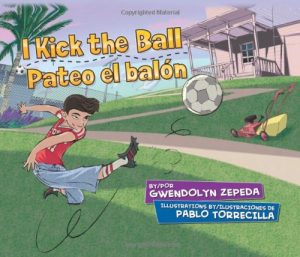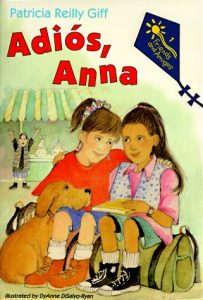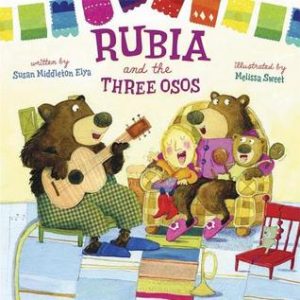 Retells the story of Goldilocks and the three bears in rhyming text interspersed with Spanish words, which are defined in a glossary.
Retells the story of Goldilocks and the three bears in rhyming text interspersed with Spanish words, which are defined in a glossary.
Latinx in US
Side By Side/Lado A Lado
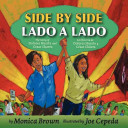
Every day, thousands of farmworkers harvested the food that ended up on kitchen tables all over the country. But at the end of the day, when the workers sat down to eat, there were only beans on their own tables. Then Dolores Huerta and Cesar Chavez teamed up. Together they motivated the workers to fight for their rights and, in the process, changed history. Award-winning author Monica Brown and acclaimed illustrator Joe Cepeda join together to create this stunning tribute to two of the most influential people of the twentieth century. Todos los dÍas, miles de campesinos cosechaban los alimentos que se servÍan en los hogares de todo el paÍs. Pero al terminar la jornada, cuando los campesinos se sentaban a comer, lo Único que habÍa en sus propias mesas era frijoles. Entonces, Dolores Huerta y CÉsar ChÁvez se unieron para motivar a los trabajadores a luchar por sus derechos y en el proceso, cambiaron el curso de la historia. La premiada autora Monica Brown y el aclamado ilustrador Joe Cepeda se unen para crear Éste impresionante tributo a dos de las personas mÁs influentes del siglo veinte.
I Kick The Ball / Pateo El Balon
Pepita and the Bully / Pepita Y La Peleonera
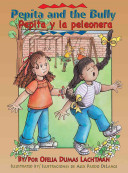
After a mean-spirited girl bullies her for three days in a row, Pepita no longer wants to go to her new school.
How Tía Lola Saved the Summer

Miguel Guzman isn’t exactly looking forward to the summer now that his mother has agreed to let the Sword family—a father, his three daughters, and their dog—live with them while they decide whether or not to move to Vermont. Little does Miguel know his aunt has something up her sleeve that just may make this the best summer ever. With her usual flair for creativity and fun, Tía Lola decides to start a summer camp for Miguel, his little sister, and the three Sword girls, complete with magical swords, nighttime treasure hunts, campfires, barbecues, and an end-of-summer surprise! The warm and funny third book in the Tía Lola Stories is sure to delight young readers and leave them looking forward to their own summer fun!
See the review at WOW Review, Volume 5, Issue 3.
Tortilla Sun
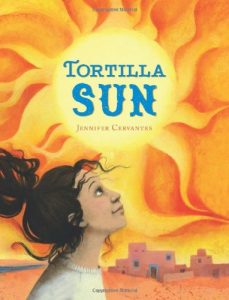 When twelve-year-old Izzy discovers a beat-up baseball marked with the words ‘Because magic’ while unpacking in yet another new apartment, she is determined to figure out what it means. What secrets does this old ball have to tell? Her mom certainly isn’t sharing any especially when it comes to Izzy’s father, who died before Izzy was born. But when she spends the summer in her Nana’s remote New Mexico village, Izzy discovers long-buried secrets that come alive in an enchanted landscape of watermelon mountains, whispering winds, and tortilla suns. Infused with the flavor of the southwest and sprinkled with just a pinch of magic, this heartfelt middle grade debut is as rich and satisfying as Nana’s homemade enchiladas.
When twelve-year-old Izzy discovers a beat-up baseball marked with the words ‘Because magic’ while unpacking in yet another new apartment, she is determined to figure out what it means. What secrets does this old ball have to tell? Her mom certainly isn’t sharing any especially when it comes to Izzy’s father, who died before Izzy was born. But when she spends the summer in her Nana’s remote New Mexico village, Izzy discovers long-buried secrets that come alive in an enchanted landscape of watermelon mountains, whispering winds, and tortilla suns. Infused with the flavor of the southwest and sprinkled with just a pinch of magic, this heartfelt middle grade debut is as rich and satisfying as Nana’s homemade enchiladas.
Adios, Anna (Friends And Amigos)
Cesar Chavez
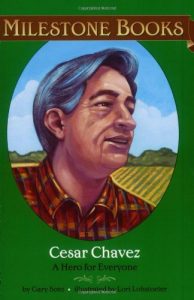 ¡Viva la causa!
¡Viva la causa!
¡Viva César Chávez!
Up and down the San Joaquin Valley of California, and across the country, people chanted these words. Cesar Chavez, a migrant worker himself, was helping Mexican Americans work together for better wages, for better working conditions, for better lives.
No one thought they could win against the rich and powerful growers. But Cesar was out to prove them wrong — and that he did.
Zapato Power: Freddie Ramos Springs Into Action
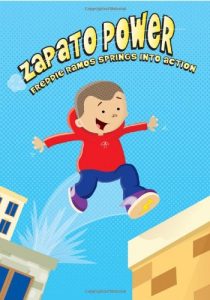 In this sequel, Freddie has shoes that give him super speed. It’s hard to be a superhero and a regular kid at the same time, especially when your shoes give you even more power! Freddie needs an on/off switch for his super speed, so Mr. Vaslov, who created the shoes, decides to invent a remote control, but he gets more than he planned. When his young neighbor’s ball goes missing, Freddie uses his new powers to find it… and save Mr. Vaslov!
In this sequel, Freddie has shoes that give him super speed. It’s hard to be a superhero and a regular kid at the same time, especially when your shoes give you even more power! Freddie needs an on/off switch for his super speed, so Mr. Vaslov, who created the shoes, decides to invent a remote control, but he gets more than he planned. When his young neighbor’s ball goes missing, Freddie uses his new powers to find it… and save Mr. Vaslov!
Sweet 15
A teenage girl’s plans for her quinceañera (15th birthday party) wreak havoc with her family and friends.

